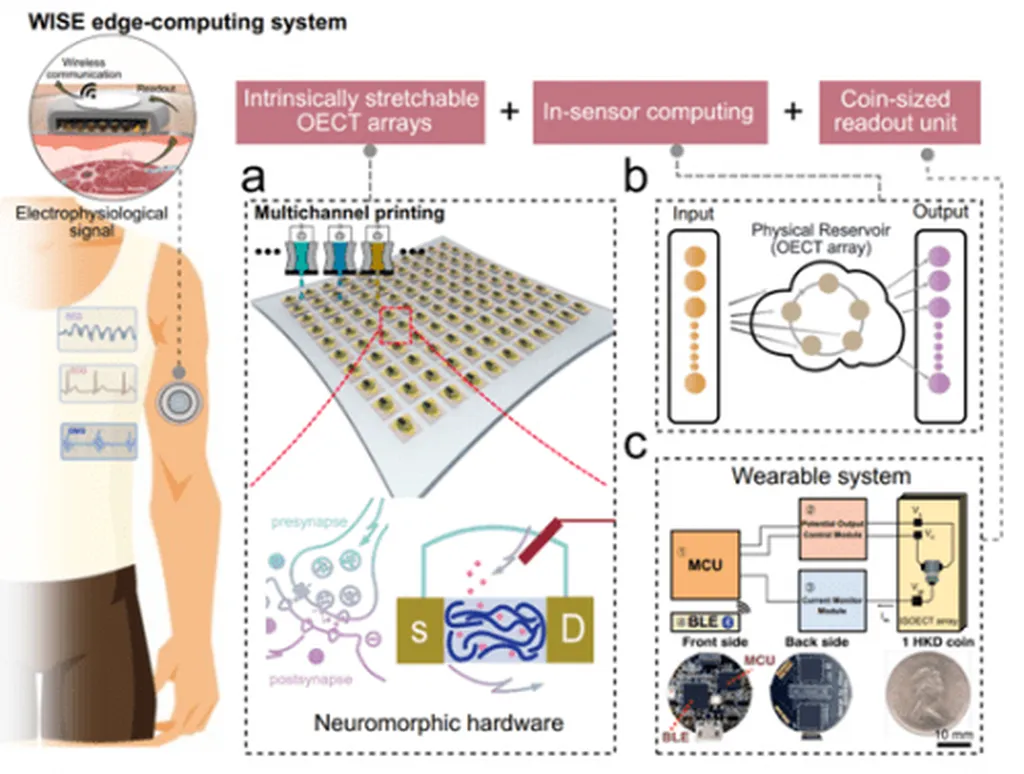In a significant stride towards advancing wearable bioelectronics, researchers at The University of Hong Kong have developed a novel approach to fabricate flexible organic electrochemical transistors (OECTs), potentially revolutionizing the energy sector and beyond. The study, led by Xinyu Tian from the Department of Electrical and Electronic Engineering, introduces a rapid, low-cost method to manufacture flexible OECTs using flexible printed circuit board (fPCB) technology and customized inkjet printing. This innovation is detailed in the journal *npj Flexible Electronics*, which translates to *Nature Partner Journal Flexible Electronics*.
OECTs are highly sought after for their low-power signal amplification and neuron-like behavior, making them ideal for biosensing and brain-inspired computing. However, their complex manufacturing process, especially in flexible forms, has posed challenges. Tian and his team addressed this by proposing a non-aqueous gel-gated approach, enhancing the electrochemical stability of flexible OECTs associated with fPCBs.
“The key breakthrough here is the combination of rapid, low-cost fabrication with improved stability,” Tian explained. “This paves the way for scalable, flexible OECT systems that can be easily integrated into wearable bioelectronics.”
The implications for the energy sector are profound. Flexible OECTs can be used in energy-harvesting devices, such as wearable sensors that monitor environmental conditions or human health metrics, providing real-time data to optimize energy use. Moreover, their low-power requirements align with the growing demand for energy-efficient technologies.
The research team validated their platform for scalability, stability, and performance in real-world applications. This validation is crucial for commercial adoption, as it ensures that the technology can withstand the rigors of everyday use.
“This is not just about creating a new device; it’s about creating a new paradigm for how we interact with and manage energy,” Tian added. “The potential applications are vast, from personal health monitoring to industrial energy management.”
The study’s findings open up new avenues for developing low-cost, flexible, multifunctional OECT systems. As the demand for wearable bioelectronics continues to grow, this research could shape future developments in the field, driving innovation and efficiency in the energy sector and beyond. The work published in *npj Flexible Electronics* marks a significant step forward in the quest for advanced, flexible electronic systems.

